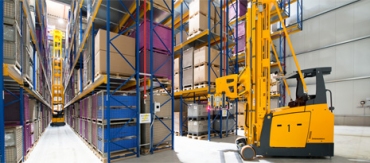Despite the recovering economic picture, the battle against margin squeeze is as prevalent and fierce as ever. Whilst inflation remains low, often the only way for companies to increase profits is to drive down costs and expenditure. This must be done whilst retaining a level of service or supply, meaning slash and burn methods of cost cutting are simply not acceptable. What is needed is an efficiency drive to increase productivity and cut back on waste or redundancies.
Warehousing costs make up a significant proportion of many companies’ operational expenditure; up to 10% or 15% in some organisations. As such, senior management often looks to warehousing as a potential cost cutting area.
These costs can broadly be categorised into four groups; handling, storage, operational and administration.
Handling costs are those which can be attributed to moving goods or material into, around and out of the warehouse. Labour costs make up the bulk of these expenditures, but handling equipment, packaging and associated energy costs can all be attributed to handling.
The storage category encompasses all the costs incurred whilst goods remain ‘at rest’ within the warehouse. This is made up of the expense required to rent or occupy the warehouse and is usually constant month-to-month.
Operational expenditure includes the expenses incurred in operating the warehouse. IT, insurance, tax and warehouse supplies are all included in the category.
Finally, administration costs involve general management, non-operational staff and other general office expenses.
Now, each of these four types of cost can be cut back; some more easily than others. This guide offers five ways to do just that.
Space Optimisation
The cost of leasing land is one of the greatest contributors to overall warehouse expenditure and so maximising the quantity of goods or material you store per square metre is paramount in saving money. Stacking upwards is far cheaper than across, so ensure the racking makes use of your warehouses height and that existing racking is filled to the top before installing more.
Aisles need to be wide enough for vehicles and handling equipment to safely traverse but should be no wider, as this is wasted space. On the other hand, consider the future when designing your racking layout to avoid costly re-shuffles at a later date. Installing racking to then upgrade your forklifts to a larger model and find your aisles are too small is a waste of time and money.
Lease Equipment and Pallets
The capital expenditure (CAPEX) model that many companies are moving towards dictates that leasing equipment and outsourcing things such as vehicle and pallet hire can save money in the long wrong. Instead of costly up front investments, hiring pallets and forklift trucks or other lifting equipment such as telehandlers can prove far more economical. Not only are there no large outlay of capital, the requirement for maintenance and storage of equipment is drastically reduced. For telehandler hire in the UK, visit www.UKForks.com.
Labour Reduction
Whilst redundancies and job losses are unpopular, labour costs make up a huge part of the operational costs of any warehouse. By automating tasks where possible you can streamline processes as well as cut back on expensive employees. Whilst you may have a battle with the unions, in the long run, automation is far more cost effective.
Reduce Energy Consumption
The energy used to power a warehouse also makes up a significant proportion of total operational expenditure. By implementing even simple procedures, this can be cut back dramatically.
This could involve installing smart lights and air conditioning that shut off or run on energy saving mode when no-one is around. Ensuring machinery and computers are properly shut off when not in use is also a quick win. To improve the natural light of the warehouse, paint the walls white and install large windows.
Continuous Improvement
Finally, implement a process of continuous improvement in the warehouse, enlisting the help of supervisors and staff to help save costs. By listening to those on the ground and incrementally implementing simple but effective changes you can hope to improve efficiencies without the need for radical or expensive overhauls. Kaizen, or similar methodologies, are a great starting place for those new to continuous process improvement.

